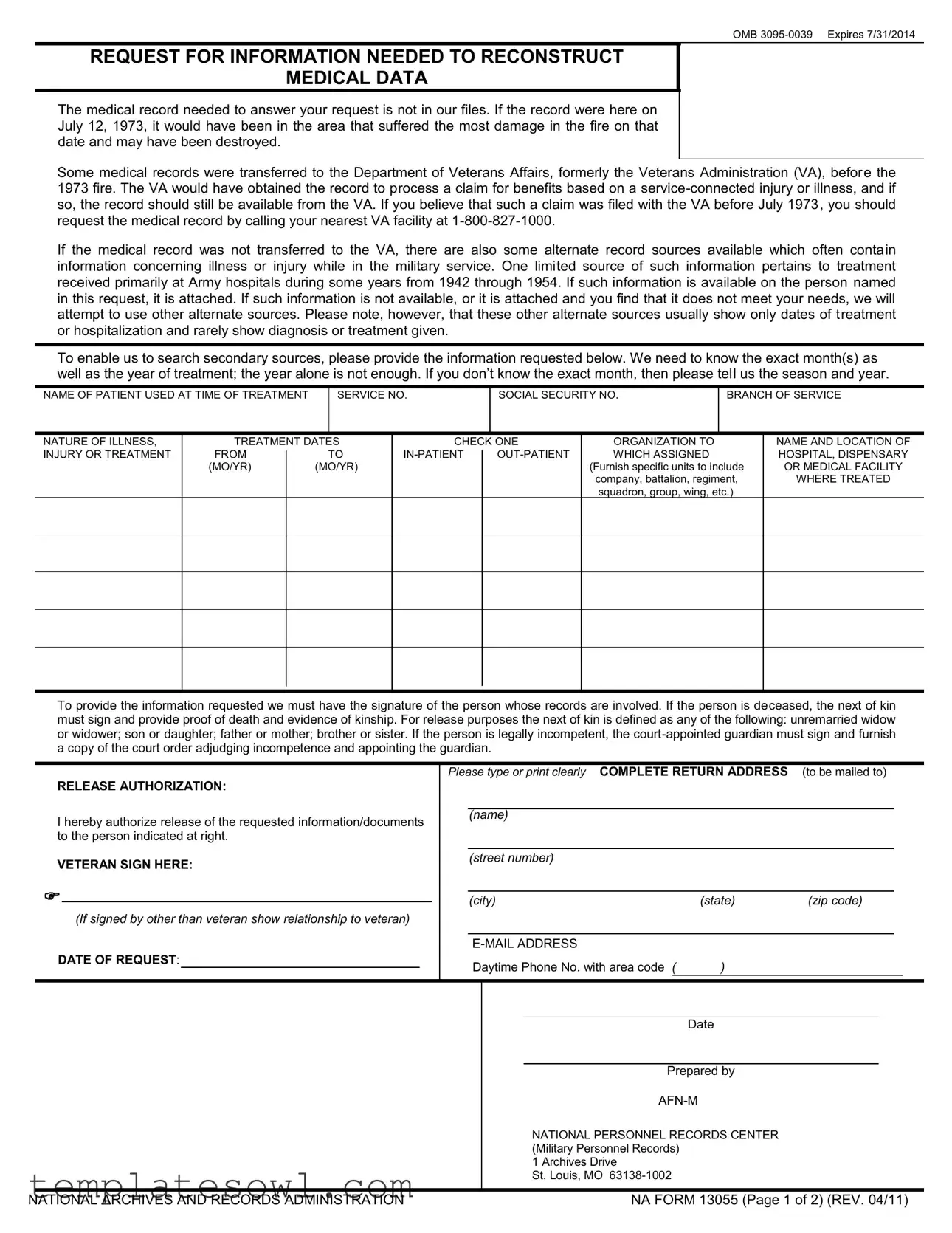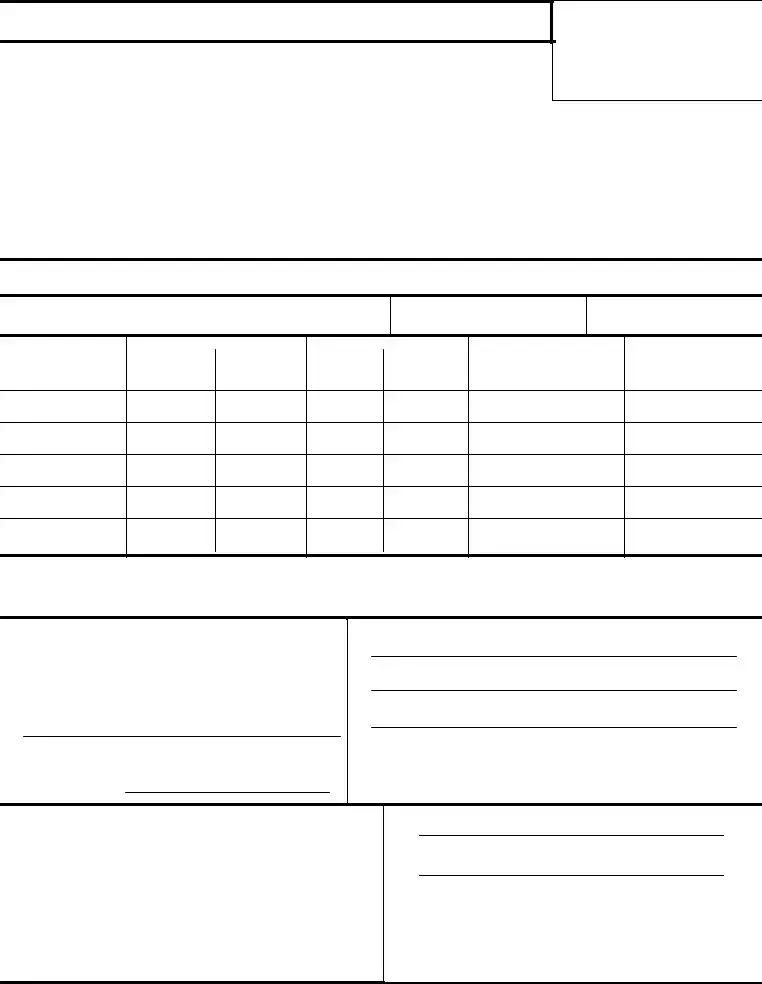What is Form 13055 used for?
Form 13055 is a request for information needed to reconstruct medical data related to military service. It helps individuals obtain medical records that may have been lost or destroyed, particularly in the 1973 fire that impacted many records at the National Personnel Records Center.
Who should fill out Form 13055?
The form should be filled out by the person whose records are being requested, or by the next of kin if the individual is deceased. If the individual is legally incompetent, their court-appointed guardian must complete the form.
What information is required on Form 13055?
The form requires details such as the patient's name at the time of treatment, service number, social security number, branch of service, nature of illness or injury, treatment dates, and the name and location of the medical facility where the treatment occurred. Additionally, the signature of the individual or the next of kin is needed for authorization.
What should I do if I do not have the exact dates of treatment?
If the exact month of treatment is not known, the form allows the submission of the season and year instead. The more specific the information provided, the better the chances of accurately locating the requested records.
How can I obtain military medical records if they were transferred to the VA?
If medical records were transferred to the Department of Veterans Affairs (VA), one should contact the nearest VA facility at 1-800-827-1000 to request those records. The VA may retain the necessary documentation to process claims related to service-connected injuries or illnesses.
Are there alternative sources for medical records if Form 13055 does not yield results?
Yes, alternative sources exist that may contain relevant information. These sources often include records from Army hospitals dating from 1942 through 1954. It is important to note that these records typically only provide limited details, such as dates of treatment, rather than in-depth medical information.
What if the requester is not the veteran or next of kin?
If the person filling out the form is not the veteran or their next of kin, they must provide written authorization from the veteran or the appropriate legal representative. This ensures compliance with privacy regulations and protects the rights of the individual whose records are being requested.
Is there a deadline for submitting Form 13055?
There is no specified deadline for submitting Form 13055; however, timely submission is advisable to avoid delays in obtaining the requested information. It is also important to ensure all required information is complete to facilitate the processing of the request.
Why is my signature required on Form 13055?
The signature is a necessary element of the authorization process. It verifies the requester's identity and grants permission for the release of the medical records, thereby protecting sensitive information in accordance with privacy laws.


